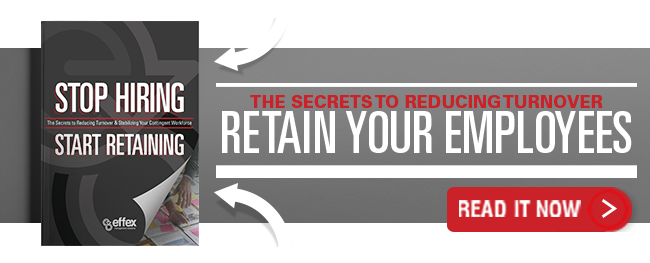
If you haven’t had the need to hire contingent workers in the past, chances are you will be looking at this type of personnel when you need to supplement your existing permanent workforce. However, filling a gap – whether it be for seasonal help or due to some other increase in demand – isn’t as easy as placing an ad online or putting up a flier. There are many differences between full time workers and contingent personel that you need to recognize in order to make sure the workplace environment is happy.
The key to satisfying each of these distinct groups is to understand how they’re different and to use this information to address their unique concerns. You need to listen to both your permanent employees and your contingent workers in order to keep the workplace operating efficiently. Here’s how to find the right harmonious balance.
Contingent vs. Permanent Employees
- They’re separate personnel groups. The main distinction between regular and contingent staff is best described by the terminology used. The latter group is hired on a contingent basis and their retention as an employee depends upon the continued existence of a certain condition. A temporary workforce is sometimes necessary to respond to increases in demand, but a full time hire is impractical because that demand will likely fade. Legally, a contingent worker is also separate because they’re treated differently under tax and employment law.
Efficiently Tip: Listen to both your permanent & contingent workers in order to keep the workplace operating efficiently. #Staffing
— Effex (@EffexMS) June 22, 2015
- Each segment is valuable. You consider your permanent workforce an important company asset, and your contingent personnel can likewise be an advantage. They can be retained to fill production fluctuations, thereby reducing costs of hiring new people when your need is short term. These people can be an effective addition to your team if they can take over some of the more routine tasks that consume your regular personnel’s time.
- They have different motivations. Your full time staff works for salary, benefits and job satisfaction, among other things. A contingent worker is very similar in terms of motivation, but there are additional goals. Many temporary workers are looking to learn career development skills or have personal reasons that they seek contingent employment.
A Happy Workplace Means Listening to Both Groups
- Keep your permanent employees satisfied. These people are your company’s bread and butter, so you need to create a workplace environment that’s inspiring, rewarding and encouraging. Contrary to what you might think, doing so doesn’t always mean boosting salaries. Boost benefits, find unique perks, implement an employee recognition program or establish retreats that engage them. Most importantly, always be available to listen to concerns and address them. Your permanent employees’ happiness is largely dependent upon their perception of being heard.
- Appreciate the unique needs of your contingent workers. A contingent workforce is hired to fill a need and they know their position may be eliminated at any given time. Plus, their salaries and any other perks are pre-determined, so they’re not incentivized like your full time people. Regardless, you cannot be careless or apathetic when dealing with these individuals. As mentioned, they’re a valuable asset to your company and deserve to be treated as such.
While your regular employees and contingent personnel are contributing to your company’s bottom line, you need a different approach to each group in order to maintain efficiency and productivity. It starts with recognizing that they have unique goals and keeping the lines of communication open to hear from both sides. Treat them as the distinct creatures that they are, and you’ll be better able to keep them all happy and address any issues that arise.

